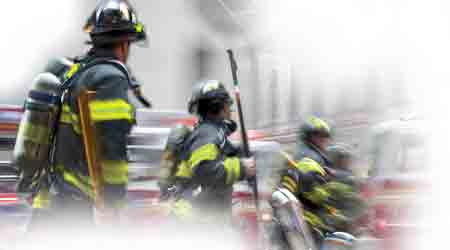In Case of Emergency: The Facilities Management Role at Arizona State
Part 1 of a 3-part article on Facilities Management's role in emergency preparation
The task of planning and preparing for an emergency is challenging under any circumstances, given the number of factors planners must consider and the number of operations, activities and resources that they must coordinate. The process becomes even more complex when the organization involved is spread across five campuses, contains 150 facilities with 15 million square feet of space, and must account for the location and movement of more than 15,000 campus residents.
Yet that is exactly the challenge faced daily by Allen Clark, director of emergency management with Arizona State University (ASU) in Tempe. Among the resources at Clark’s disposal is the university’s facilities management department, which plays a central role in seeking to ensure that campus facilities, assets and occupants remain safe in the event of an emergency.
“As the emergency manager, I rely heavily on Facilities (Management) for ongoing maintenance to keep our critical infrastructure working properly,” Clark says. “In addition, they provide the valuable situational updates and technical information that is a major component of any incident or event planning cycle. Facilities personnel play an integral role in everything we do in emergency management, from preparation to recovery.”
Defining a role
Emergency response and recovery plans are complex documents by their very nature, given the number of activities, resources and people that they must account for and coordinate in order to address situations as diverse as floods, fires, power outages and active shooters. Clark refers to the role of facilities management in campus emergency planning as, in part, “boots on the ground.”
“ASU conforms to the National Incident Management System put in after 9/11 saying we must manage all domestic incidents,” Clark says. “Part of NIMS is the incident command system, which has eight components. Facilities we classify as boots on the ground, or operations. So if we have an incident, we not only have them preparing sandbags. They’re cutting trees, maintaining roadways, controlling ingress and egress.”
The department also ensures that those involved in the recovery efforts have all of the materials and resources they need to complete their tasks.
“From the logistics perspectives, those are the people that get us stuff,” Clark says of facilities management. “So if we need lights and generators, facilities management helps with the logistics of getting materials we need to secure our campuses.”
For Rick Pretzman, the university’s associate director of facilities management, his department’s role in emergency planning and response is just one element — albeit an important one — of the department’s role in overall facility safety and reliability.
“Managing the operations of such a diverse infrastructure requires some unique skills and a global perspective because of the ways in which the various campus functions are interrelated,” Pretzman says. “Being a part of the emergency planning process gives (facilities management) the information needed to react in difficult situations and helps them understand the perspective of the authorities having jurisdiction under those circumstances.”
Clark emphasizes the unique and often overlooked perspective Pretzman’s department brings to the process.
“In a municipality, we think about police and fire and public works,” Clark says. “But in universities, often times, our facilities management area gets overlooked. We’ve made a concerted effort not to do that. We bring them to the table. They’ve been a great partner and have a ton of resources. They’re integrated and interwoven into everything we do at ASU, so they need to be at the table as part of emergency management.
“Our facilities department is heavily involved with pro-active groups that calculate and address risk to our infrastructure and help the institution prepare for pre-planned events or unplanned incidents. In addition, they are a very important part of our exercise design group.
“ASU runs one full-scale exercise annually, full scale meaning boots on the ground with fire and police response and facilities response. Facilities is always invited to the table to help us design our exercises so we can include things that are pertinent to them in testing their processes and procedures.”
Related Topics:













